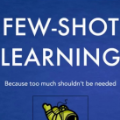Few Shot Instance Segmentation (FSIS) requires models to detect and segment novel classes with limited several support examples. In this work, we explore a simple yet unified solution for FSIS as well as its incremental variants, and introduce a new framework named Reference Twice (RefT) to fully explore the relationship between support/query features based on a Transformer-like framework. Our key insights are two folds: Firstly, with the aid of support masks, we can generate dynamic class centers more appropriately to re-weight query features. Secondly, we find that support object queries have already encoded key factors after base training. In this way, the query features can be enhanced twice from two aspects, i.e., feature-level and instance-level. In particular, we firstly design a mask-based dynamic weighting module to enhance support features and then propose to link object queries for better calibration via cross-attention. After the above steps, the novel classes can be improved significantly over our strong baseline. Additionally, our new framework can be easily extended to incremental FSIS with minor modification. When benchmarking results on the COCO dataset for FSIS, gFSIS, and iFSIS settings, our method achieves a competitive performance compared to existing approaches across different shots, e.g., we boost nAP by noticeable +8.2/+9.4 over the current state-of-the-art FSIS method for 10/30-shot. We further demonstrate the superiority of our approach on Few Shot Object Detection. Code and model will be available.
翻译:少许弹道区分(FSIS) 需要模型来检测和分解新类,并有为数不多的支持示例。 在这项工作中,我们探索FSIS及其增量变异的简单而统一的解决方案,并推出名为RefT(RefT)的新框架,以充分探索基于类似变异器框架的支持/询问特征之间的关系。我们的主要见解是两个折叠:首先,在支持面罩的帮助下,我们可以产生更适合重新加权查询特征的动态类中心。第二,我们发现支持对象查询已经在基础培训之后对关键因素进行了编码。这样,从两个方面,即地貌和实例层面,可以两次强化查询功能的简单而统一的解决方案。特别是,我们首先设计一个基于掩码的动态加权模块,以加强支持特征,然后提出将对象查询联系起来,以便通过交叉关注更好地校正。 在上述步骤之后,新类别可以大大改进我们的强基线。 此外,我们的新框架可以很容易扩展至递增FSISIS。 当为FSIS、 gFSIS、 gFSIS、 gFSIS、 scial 和SIS 的透明化现有方法比比我们现有的10 方法比。


